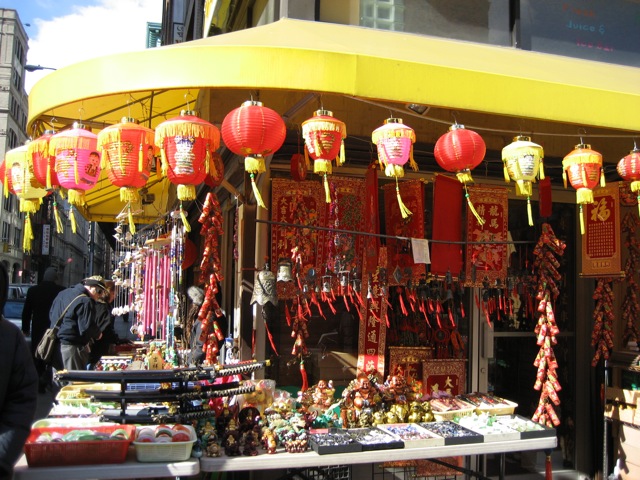Chinatown Manhattan: What's Real
From Decoding New York
| Introduction |
| Manhattan |
| * Evolution |
| * What's Real |
| * Here v. There |
| * Economy |
| Flushing |
| * Evolution |
| * What's Real |
| * Here v. There |
| * Economy |
| Brooklyn 8th Avenue |
| * Evolution |
| * What's Real |
| * Here v. There |
| * Economy |
| Comparison |
| * Photo Gallery |
| * Sources
|
Chinatown’s authenticity owes much to the use of certain dialects in spoken interactions. This insider/outsider mentality was also reflected in the Associations (tongs) that served as an organizational body in the early 1900s. The tongs that were in existence in turn of the century Chinatown ran the area, but were nearly impossible to gain entry to without an invitation. Many of these tongs had specific gang connections, creating a dangerous environment for youths growing up in Chinatown. During the Chinese Exclusion Act, two organized crime syndicates controlled Chinatown - the On Leong tong of Pell Street and the Hip Sing tong of Mott Street. Although these tongs are no longer in existence, the same system of introductions is still firmly in place. In order to gain employment or contacts, it is essential to be introduced by family or friends to the right people. Julie Tay, director and co-founder of the Ai Center for Chinese Wossing first got her start in Chinatown’s Cantonese opera community through an introduction from a family friend. Ms. Tay, having immigrated from Singapore to New York for a PhD in Linguistics at the CUNY Graduate Center, said that she felt homesick and disconnected from other co-ethnics because of her student status, and asked to be introduced to the Cantonese opera community. Although Ms. Tay got her start from the traditional introduction system, she is trying to make Chinese arts and culture more accessible to those without such connections. The Ai Center provides classes in Chinese language and music while also providing a sense of community. This strong sense of community is perhaps the most important real aspect of Chinatown- without it, this neighborhood would not be nearly as successful.
Due to the Chinatown economy's reliance on tourism, there is less open hostility towards blacks, Hispanics and non-Hispanic whites than in other areas. Non-Hispanic whites in Chinatown are treated politely, but as visitors and not residents. There is an immediate camaraderie among Cantonese-speakers while those Chinese who are unable to speak Cantonese (Mandarin speakers less so than American-born Chinese) are discriminated against. The authenticity of Chinatown owes much to the importance and use of language, reflecting Chinese values and customs as well as allowing new opportunities to grow.
Residences in Chinatown reflect the age of the area. Most residential buildings are tenement houses, and some are still cold-water apartments without private bathrooms and adequate fire exits. Many apartments in Chinatown are rent controlled, allowing for lower-income households to maintain rent payments. However, some landlords pressure tenants to vacate in order to increase turnover or sell property to developers. Illegal and undocumented immigrants living in Chinatown often stay in illegal dormitory-style residences which often have inadequate facilities and overcrowded spaces. Congestion in Chinatown and lack of affordable, quality housing has prompted the establishment of satellite Chinatowns, namely Flushing in Queens and Eighth Avenue in Sunset Park, Brooklyn.
